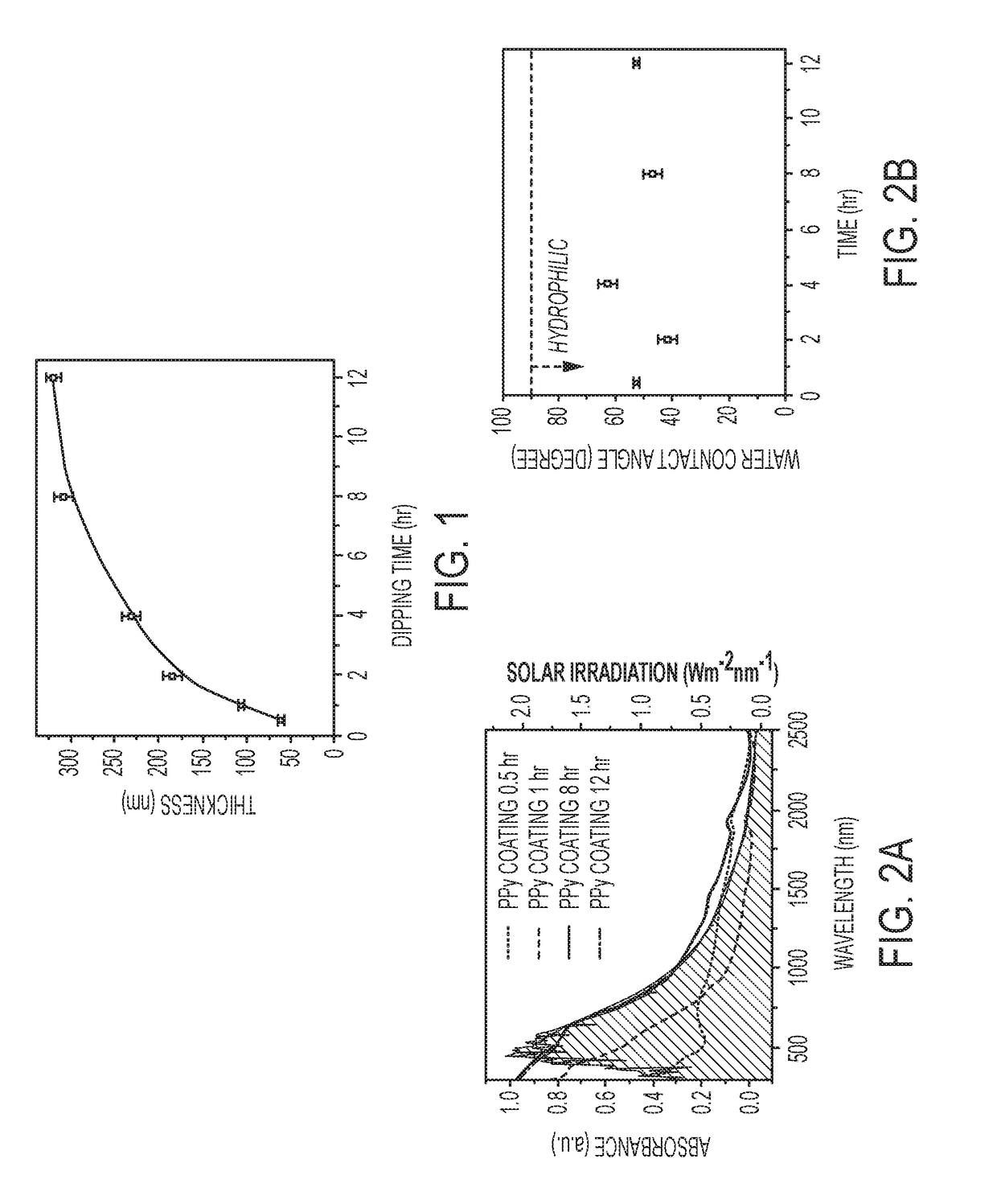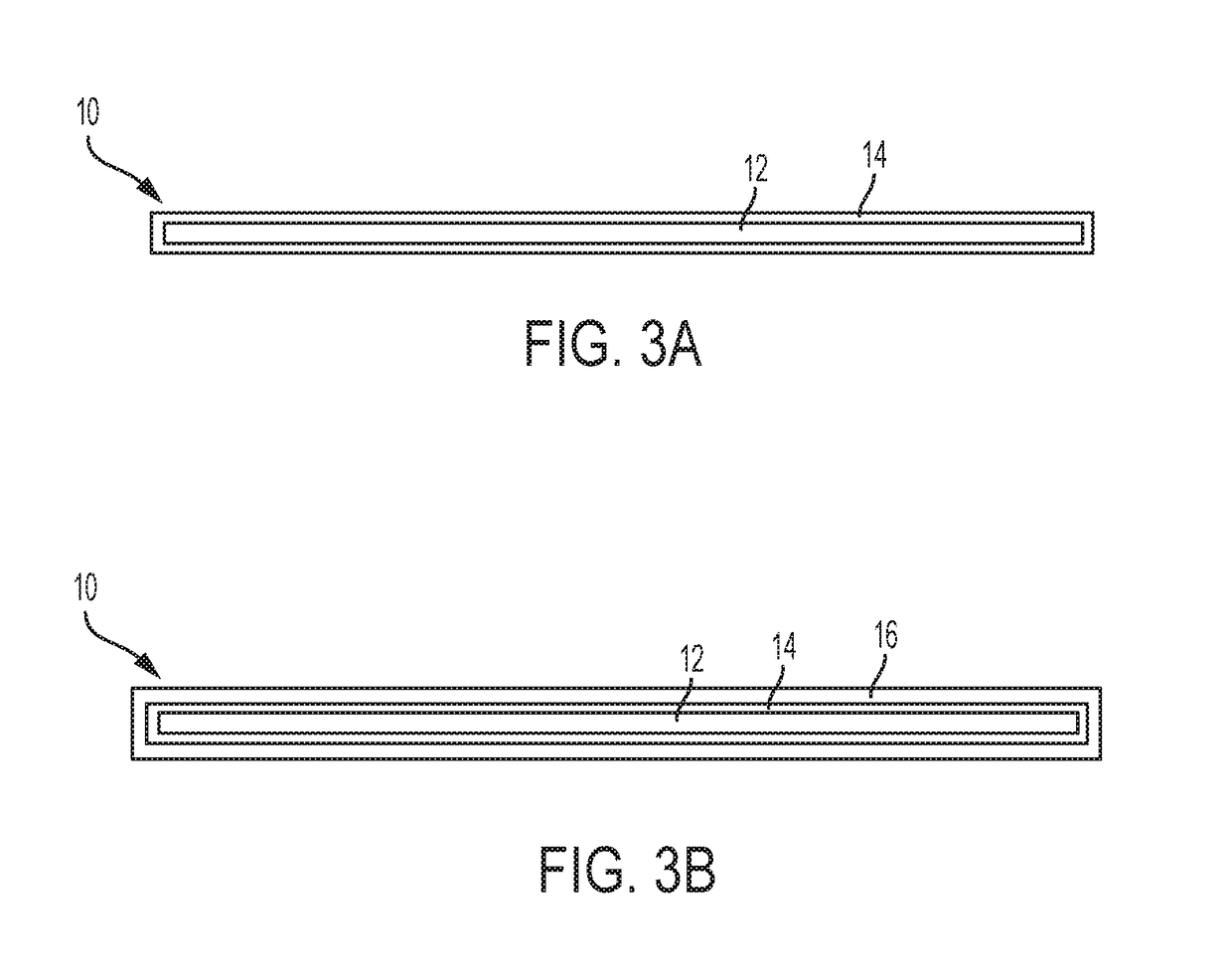In-situ solar-to-heat coating for drinking water purification, seawater desalination, and wastewater treatment
a technology of drinking water purification and solar energy, applied in the field of in-situ solar energy to heat coating for drinking water purification, seawater desalination, wastewater treatment, can solve the problems of large amount of energy required for methods, ineffective early attempts, and increasing global challenges in freshwater scarcity, so as to efficiently treat dirty water or seawater, the effect of converting solar energy
- Summary
- Abstract
- Description
- Claims
- Application Information
AI Technical Summary
Benefits of technology
Problems solved by technology
Method used
Image
Examples
working examples
[0021]A versatile thin film dip-coating fabrication strategy for polypyrrole (PPy)-coated interfacial solar membrane based on traditional thermal desalination membrane material, such as a porous polypropylene substrate, which has been widely used as thermal desalination membrane for decades. Polypyrrole (PPy) was selected as the thin film coating on the non-conductive polypropylene due to its broad spectrum absorption (from visible to near-infrared) and high photothermal conversion efficiency. PPy has outstanding stability and is cost-effective compared with noble metal nanoparticles. PPy also has good biocompatibility and low long-term cytotoxicity in comparison of carbon material. PPy is also known to have a self-healing hydrophobicity (wettability) property to maintain hydrophobicity and the hydrophobic fluoroalkylsilane top layer of the coating. This property is attributed to self-migration of fluoroalkylsilane within the PPy coating under chemical oxidation (oxidative chemical ...
PUM
| Property | Measurement | Unit |
|---|---|---|
| Thickness | aaaaa | aaaaa |
| Electrical conductor | aaaaa | aaaaa |
| Hydrophobicity | aaaaa | aaaaa |
Abstract
Description
Claims
Application Information
 Login to View More
Login to View More - R&D
- Intellectual Property
- Life Sciences
- Materials
- Tech Scout
- Unparalleled Data Quality
- Higher Quality Content
- 60% Fewer Hallucinations
Browse by: Latest US Patents, China's latest patents, Technical Efficacy Thesaurus, Application Domain, Technology Topic, Popular Technical Reports.
© 2025 PatSnap. All rights reserved.Legal|Privacy policy|Modern Slavery Act Transparency Statement|Sitemap|About US| Contact US: help@patsnap.com



